Welcome to our free classical music site

Do you write about classical music? Are you a blogger? Want to team up with Classical Connect? Send us a message, let's talk!

Do you write about classical music? Are you a blogger? Want to team up with Classical Connect? Send us a message, let's talk!
May 11, 2015. Monteverdi. The great Italian composer Claudio Monteverdi was born this week, on May 15th of 1567. And so were three French composers, Jules Massenet, Gabriel Fauré and Erik Satie: Massenet on May 12th of 1842, Fauré on the same day three years later in 1845 and Satie on May 17th, 1866. We wrote about Massenet and Fauré last year, and the wonderfully whimsical Satie will have to wait for another occasion, as this entry will go to the “father of the Italian opera.”
Here are two episodes from L’Orfeo: first, Rosa del ciel, (Orfeo and Euridice nuptial ceremony) from Act I, with Montserrat Figueras and Furio Zanasi, with Jordi Savall directing Le Concert des Nations; then, aria Tu se' morta from Act II. Georg Nigl is Orfeo. And here’s from the 2010 production of L'incoronazione di Poppea, with the wonderful Danielle de Niese as Poppea and Philippe Jaroussky as Nerone. William Christie conducts Les Arts Florissants.Permalink
May 4, 2015. Brahms and Tchaikovsky. This is the week when we celebrate two birthdays, that of Johannes Brahms and of Peter Tchaikovsky. Both were born on May 7th: Brahms in 1833, Tchaikovsky – in 1840. Last year we wrote rather extensively about the latter, and heard two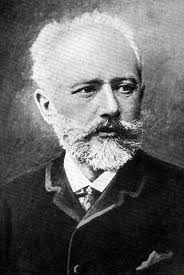 first symphonies, the magisterial one by Brahms, which he spent almost 15 years composing (he started working on it in 1862, it was premiered in 1876), and also Tchaikovsky’s First, which is much smaller both in scale and as a musical achievement; it was written in 1866. Тhe comparison wasn’t quite fair, and we did it only because of Tchaikovsky’s incomprehensible disdain for Brahms’s music. Tchaikovsky wrote six symphonies and only the last three represent his talent at its highest level, while all four of Brahms’s symphonies are great. So if we were to continue the parallel, we’d probably have to compare Tchaikovsky’s Fourth with Brahms’s Second, especially considering that they were written practically at the same time: Tchaikovsky’s in 1877-78, while Brahms, after procrastinating over his first, wrote the second in just one summer of 1877.
first symphonies, the magisterial one by Brahms, which he spent almost 15 years composing (he started working on it in 1862, it was premiered in 1876), and also Tchaikovsky’s First, which is much smaller both in scale and as a musical achievement; it was written in 1866. Тhe comparison wasn’t quite fair, and we did it only because of Tchaikovsky’s incomprehensible disdain for Brahms’s music. Tchaikovsky wrote six symphonies and only the last three represent his talent at its highest level, while all four of Brahms’s symphonies are great. So if we were to continue the parallel, we’d probably have to compare Tchaikovsky’s Fourth with Brahms’s Second, especially considering that they were written practically at the same time: Tchaikovsky’s in 1877-78, while Brahms, after procrastinating over his first, wrote the second in just one summer of 1877.
Tchaikovsky composed the Fourth around the time he was recovering from the disastrous marriage to his former student, Antonina Milyukova. Tchaikovsky married Milyukova in July of 1877 (at that time he was working on his opera “Eugene Onegin”). The marriage was hastily arranged. It seems that Tchaikovsky mostly wanted to stop the rumors of his homosexuality; at least that’s what we find in his letter to his brother Modest. But homosexuality was also the reason the marriage turned a devastating failure. In just several weeks Tchaikovsky fled. The whole experience upset him to no end. Despondent, he quit his position at the Moscow Conservatory and set off for Italy. But even in this terrible mental state, he continued to compose, and the Forth symphony was the main work he produced during that period. Most of its themes are either tragic or full of melancholy. Following Beethoven’s Fifth, the first movement is built around the theme of Fate; Tchaikovsky himself spelled out the “program” of the first movement in a letter to his patroness Nadezhda von Meck, writing that fate prevents one from attaining happiness). The reference in the fourth movement%20by%20Lev%20Russov.jpg) to a simple Russian folk song about the birch tree in a field also has melancholy overtones. Even the rousing finale refers to the Fate motive of the first movement. Tchaikovsky was in Florence when the Symphony premiered in Moscow, in February of 1878 with his friend Nikolai Rubinstein conducting. The initial reception was rather negative, not just in Russia but also in the US, Germany and Britain. Soon after, though, opinions changed with the Fourth being acknowledged as Tchaikovsky’s masterpiece and one of the most important Romantic symphonies. We’ll hear it in a taut, unsentimental 1957 performance by the Leningrad Philharmonic under the baton of the great Russian conductor Evgeny Mravinsky. The portrait of Mravinsky, above, was painted by Lev Russov the same year the recording was made, in 1957.
to a simple Russian folk song about the birch tree in a field also has melancholy overtones. Even the rousing finale refers to the Fate motive of the first movement. Tchaikovsky was in Florence when the Symphony premiered in Moscow, in February of 1878 with his friend Nikolai Rubinstein conducting. The initial reception was rather negative, not just in Russia but also in the US, Germany and Britain. Soon after, though, opinions changed with the Fourth being acknowledged as Tchaikovsky’s masterpiece and one of the most important Romantic symphonies. We’ll hear it in a taut, unsentimental 1957 performance by the Leningrad Philharmonic under the baton of the great Russian conductor Evgeny Mravinsky. The portrait of Mravinsky, above, was painted by Lev Russov the same year the recording was made, in 1957.
Brahms’s life during this period was very different. His career was at the summit. Even though some years earlier his First Piano concerto was poorly received, the German Requiem established him as one of the most important European composer. He had recently completed the First symphony, and was invited all around Europe to perform it as the pianist and conductor (he mostly played his own work). He had many friends (Clara Schumann being one of them) and even more admirers. In 1878, for the first time in his life, he went on vacation to Italy, which he described as paradise. Brahms was in Italy practically at the same time as Tchaikovky – but in a very different mood. Somehow this mood affected his Second symphony, so "pastoral" in nature that it was often compared to Beethoven’s Sixth. Here’s Brahm’s Symphony no. 2 in D major, Op. 73, performed by the Chicago Symphony Orchestra, Georg Solti conducting.Permalink
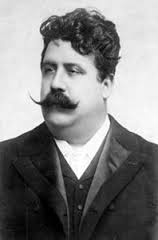
April 27, 2015. Alessandro Scarlatti and Leoncavallo. Two wonderful Italian opera composer were born around this time, two centuries apart - Alessandro Scarlatti and Ruggero Leoncavallo. Scarlatti was close to the beginning of the Italian opera, Leoncavallo – at the end of it, or at least that’s how it feels from our vantage point (let’s hope the Italian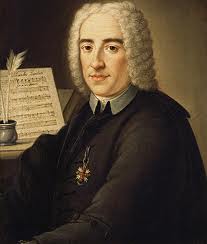 genius rejuvenates itself in the near future). Alessandro Scarlatti was born on May 2nd of 1660 in Palermo, Sicily (we’ve written about him a number of times, for example here and here). When he was 12, he went to Rome and studied there with Giacomo Carissimi, another seminal figure in the history of Italian opera (Carissimi’s birthday was just several days ago: he was born on April 18th of 1605). Scarlatti wrote his first opera at the age of 19. As so many Roman composers of his time, Scarlatti worked under the patronage of Queen Christina. He then went to Naples to serve at the courts of the Viceroys, who ruled Naples on behalf of the King of Spain. He moved between Naples and Rome for the rest of his life. Scarlatti wrote 115 opera, of which 64 survive. In the process, he came up with a number of innovations, di capo aria being one of them; di capo, a tripartite aria in which the third part repeats the first (di capo meaning “from the head” or from the beginning in Italian), but with improvisations, became a mainstay of the baroque opera. Scarlatti’s last opera, La Griselda, was written in 1721. Here’s the aria In voler cio che tu brami... Che arrechi, Ottone. It’s sung by the wonderful Italian soprano Mirella Freni; Nino Sanzogno conducts the Alessandro Scarlatti Orchestra. Scarlatti wrote several oratorios, and here’s an aria from one of them, Oratorio La Santissima Vergine del Rosario. The music is absolutely exquisite and so is the performance by the incomparable mezzo-soprano Cecilia Bartoli. Les Musiciens du Louvre are conducted by Marc Minkowski.
genius rejuvenates itself in the near future). Alessandro Scarlatti was born on May 2nd of 1660 in Palermo, Sicily (we’ve written about him a number of times, for example here and here). When he was 12, he went to Rome and studied there with Giacomo Carissimi, another seminal figure in the history of Italian opera (Carissimi’s birthday was just several days ago: he was born on April 18th of 1605). Scarlatti wrote his first opera at the age of 19. As so many Roman composers of his time, Scarlatti worked under the patronage of Queen Christina. He then went to Naples to serve at the courts of the Viceroys, who ruled Naples on behalf of the King of Spain. He moved between Naples and Rome for the rest of his life. Scarlatti wrote 115 opera, of which 64 survive. In the process, he came up with a number of innovations, di capo aria being one of them; di capo, a tripartite aria in which the third part repeats the first (di capo meaning “from the head” or from the beginning in Italian), but with improvisations, became a mainstay of the baroque opera. Scarlatti’s last opera, La Griselda, was written in 1721. Here’s the aria In voler cio che tu brami... Che arrechi, Ottone. It’s sung by the wonderful Italian soprano Mirella Freni; Nino Sanzogno conducts the Alessandro Scarlatti Orchestra. Scarlatti wrote several oratorios, and here’s an aria from one of them, Oratorio La Santissima Vergine del Rosario. The music is absolutely exquisite and so is the performance by the incomparable mezzo-soprano Cecilia Bartoli. Les Musiciens du Louvre are conducted by Marc Minkowski.
Ruggero Leoncavallo is famous for just one piece of music, but what a great piece it is! Pagliacci became immensely popular immediately after its first performance in May of 1892 and it remained one of the most often performed operas ever since. Leoncavallo was born on April 23rd of 1857 in Naples into a well-to-do family (his father was a magistrate). Leoncavallo went to the Naples conservatory where he studied composition with an opera composer Lauro Rossi. Upon graduating in 1876, he wrote an opera, Chatterton, but couldn’t get it staged (it was premiered 20 years later but vanished from the repertory soon after). He traveled to Egypt and France and settled in Paris, living a bohemian life and earning some money giving music lessons. In Paris he heard Wagner’s The Ring and decided to create a trilogy as an Italian response to the German epic. He worked on it on and off; the results never amounted to much. In Paris Leoncavallo married Berthe Rambaud, a French singer. Soon after they returned to Milan, where Leoncavallo proceeded to work as librettist and composer; one of his most successful works was the libretto for Giacomo Puccini’s Manon Lescaut. 1890 witnessed the enormously successful premier of Pietro Mascagni’s Cavalleria rusticana. It strongly affected Leoncavallo, who decided to write an opera in a similar realistic (verismo) style and almost immediately started working on Pagliacci (The Clowns). Leoncavallo claimed that he wrote the libretto based on an episode from his childhood, when his father presided over a murder trial involving a love triangle. Some critics maintain that in reality the basis was a French play. The opera was premiered in Milan to mixed critical reviews and great popular acclaim. It became the first complete opera ever to be recorded and the aria Vesti la giubba (Put on the costume) became a signature piece of the great Caruso (his recording of the aria was the first to sell one million copies). Here’s Luciano Pavarotti, in a 1994 recording with the Met orchestra and James Levine.Permalink
April 20, 2015. Sergey Prokofiev. Here at Classical Connect we love all music, from the Renaissance to the contemporary. Of course we cannot get enough of the core, from Bach to the Viennese masters, to the Romantics of the 19th century, and then, through Mahler into the 20th and on. But life would be boring without the great experiments of the early composers, who were trying to find their way from craft to art. Or the more obscure baroque musicians who developed the unheard-of-before styles, such as, for example, opera. And of course we value the music of the late 20th century, as challenging as it sometimes is. And within this enormous aural universe, we have our favorites. Some of them stay with us for a very long time, other retire to the background. The same of course happens with musical tastes in general: just take a look at the Klavierabend (piano recital) programs of the first half of the 20th century: they are drastically different from what you would hear today. One composer that remains our perennial favorite is Sergei Prokofiev. As is the case with so many talented Russian artists whose life spanned two different eras, one before, another after the October Revolution, his life was full of tragedies and triumphs, exiles and returns. We’ve written about Prokofiev, who was born on April 23rd of 1891, many times, for example, here last year, and here the year before. That’s why this time we’ll just play one piano sonata, no. 8. This is the third of the so-called War sonatas; this is a traditional misnomer as the first of the three, Piano Sonata no. 6, was completed in February and premiered in April of 1940, before the Soviet Union was invaded by the Germans. Sviatoslav Richter was the pianist to first play sonatas no. 6 and 7. Sonata no. 8, on the other hand, was premiered by Emil Gilels; the event took place on December 30th of 1944 in the Great Hall of Moscow Conservatory.
Romantics of the 19th century, and then, through Mahler into the 20th and on. But life would be boring without the great experiments of the early composers, who were trying to find their way from craft to art. Or the more obscure baroque musicians who developed the unheard-of-before styles, such as, for example, opera. And of course we value the music of the late 20th century, as challenging as it sometimes is. And within this enormous aural universe, we have our favorites. Some of them stay with us for a very long time, other retire to the background. The same of course happens with musical tastes in general: just take a look at the Klavierabend (piano recital) programs of the first half of the 20th century: they are drastically different from what you would hear today. One composer that remains our perennial favorite is Sergei Prokofiev. As is the case with so many talented Russian artists whose life spanned two different eras, one before, another after the October Revolution, his life was full of tragedies and triumphs, exiles and returns. We’ve written about Prokofiev, who was born on April 23rd of 1891, many times, for example, here last year, and here the year before. That’s why this time we’ll just play one piano sonata, no. 8. This is the third of the so-called War sonatas; this is a traditional misnomer as the first of the three, Piano Sonata no. 6, was completed in February and premiered in April of 1940, before the Soviet Union was invaded by the Germans. Sviatoslav Richter was the pianist to first play sonatas no. 6 and 7. Sonata no. 8, on the other hand, was premiered by Emil Gilels; the event took place on December 30th of 1944 in the Great Hall of Moscow Conservatory.
Prokofiev started writing the sonata much earlier, in 1939. That was the year when he met and fell in love with Mira Mendelson, a young writer half his age. At the time Prokofiev was still married to Lina Llubera (they married in 1923), a Spanish singer whom he met in New York and brought to Moscow in 1936 when he decided to return to the Soviet Union. By 1941 Prokofiev and Lina were separated, and he was living openly with Mira. Mira became Prokofiev’s wife in 1948 and a very troubling story ensued (we’ll write about it another time). Mira is the dedicatee of the Eighth sonata, probably the most complex and deep of the three. Gilels’s 1944 performance was a triumph and soon became an essential part of his vast repertoire. He recoded it a number of times and played it, very successfully, around the world (Richter also made a great recording of the sonata). Here’s a studio recording, made by Gilels in Vienna in 1974. It’s four minutes longer than, for example, his live concert recording of 1967.
Permalink
April 13, 2015. Rebel and de Wert. This week, just like the previous one, looks rather bare: only one composer of note was born during this period, and even he was much more popular during his lifetime than he is today. His name is Jean-Féry Rebel, and he was born in Paris on April 18th, 1666 (that makes him two years older than François Couperin). His father was a singer at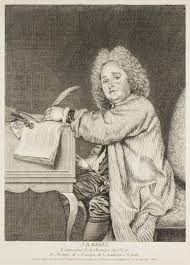 the King’s chapel (the King being Louis XIV), and apparently Jean-Féry began studying music at an early age. He was noticed by Jean-Baptiste Lully, then the most famous composer in France, and became his pupil. In 1705 Rebel was made one of the 24 musicians in Violons du Roi orchestra, and some years later – the Chamber composer, a very prestigious position. His only opera, Télémaque, was not successful; on the other hand, his dance music was extremely popular with the court. This is not surprising, considering how much Louis XIV liked to dance himself and later in his life, to watch ballet. But Rebel was a serious and innovative composer; in 1737 he wrote a ballet called Les elemens, which he preceded by a short section called Le Cahos (Chaos). You can listen to it and imagine how startled the listeners would’ve been (in this recording Musica Antiqua Köln is conducted by Reinhard Goebel). And here is Rebel’s earlier piece, Le tombeau de M. Lully, written as a tribute to his teacher. It’s performed by the violinist Amandine Beyer and the ensemble L'Assemblée des Honnestes Curieux.
the King’s chapel (the King being Louis XIV), and apparently Jean-Féry began studying music at an early age. He was noticed by Jean-Baptiste Lully, then the most famous composer in France, and became his pupil. In 1705 Rebel was made one of the 24 musicians in Violons du Roi orchestra, and some years later – the Chamber composer, a very prestigious position. His only opera, Télémaque, was not successful; on the other hand, his dance music was extremely popular with the court. This is not surprising, considering how much Louis XIV liked to dance himself and later in his life, to watch ballet. But Rebel was a serious and innovative composer; in 1737 he wrote a ballet called Les elemens, which he preceded by a short section called Le Cahos (Chaos). You can listen to it and imagine how startled the listeners would’ve been (in this recording Musica Antiqua Köln is conducted by Reinhard Goebel). And here is Rebel’s earlier piece, Le tombeau de M. Lully, written as a tribute to his teacher. It’s performed by the violinist Amandine Beyer and the ensemble L'Assemblée des Honnestes Curieux.
Giaches de Wert is one of many Renaissance composers whose date of birth was either unrecorded or lost. We’ve never written about him before, and this week is as good as any to rectify this omission. Giaches, whose first name was spelled in many ways, including the frenchified Jacques, was born around 1535 somewhere in Flanders (his name suggests that he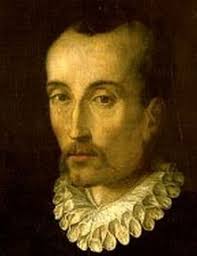 may have been born in Weert, not far from Antwerp). One of the many Flemish composers who spent most of their productive years in Italy, he belonged to the same generation as Palestrina, Orlando di Lasso and Andrea Gabrieli. Most of his life de Wert was associated with two very powerful (and related) Italian families: d’Este and Gonzagas. As a youngster he sung at the chapel of Maria di Cardona, wife of Francesco d’Este (Francesco was a son of Lucrezia Borgia from her third marriage to Alfonso d’Este, Duke of Ferrara). In 1550 Wert moved to the town of Novellara, when he washired as a musician for a branch of the Gonzaga family; he would live there for the following 15 years. Mantua was the main seat of the Gonzagas, while d’Este ruled in Ferrara; Wert traveled to both cities. (Just six years earlier, Ferrante Gonzaga had brought a 12 years old Orlando di Lasso to Mantua; some year later, Frescobaldi and Monteverdi would work there for the Gonzagas. Ferrara, at least as much a musical center as Mantua, hosted Orlando, Frescobaldi and Gesualdo, among many others). In 1565 Wert was appointed the Maestro di Capella of the newly built ducal chapel of Santa Barbara in Mantua and moved there from Novellara. He got married (according to some sources, to one Lucrezia of a minor branch of Gonzaga,) but his wife cuckolded him with Bonvicino, a composer and Wert’s rival; when the affair became public, Lucrezia was expelled from Mantua. Wert stayed behind, his reputation compromised. Wert had his own share of scandals: he started an affair in Ferrara with one Tarquinia Molza, an accomplished musician of noble descent and a lady-in-waiting to the Duchess of Ferrara. That was considered inappropriate and when the Duke Alfonso d’Este learned about the affair, Tarquinia was banished from the court.
may have been born in Weert, not far from Antwerp). One of the many Flemish composers who spent most of their productive years in Italy, he belonged to the same generation as Palestrina, Orlando di Lasso and Andrea Gabrieli. Most of his life de Wert was associated with two very powerful (and related) Italian families: d’Este and Gonzagas. As a youngster he sung at the chapel of Maria di Cardona, wife of Francesco d’Este (Francesco was a son of Lucrezia Borgia from her third marriage to Alfonso d’Este, Duke of Ferrara). In 1550 Wert moved to the town of Novellara, when he washired as a musician for a branch of the Gonzaga family; he would live there for the following 15 years. Mantua was the main seat of the Gonzagas, while d’Este ruled in Ferrara; Wert traveled to both cities. (Just six years earlier, Ferrante Gonzaga had brought a 12 years old Orlando di Lasso to Mantua; some year later, Frescobaldi and Monteverdi would work there for the Gonzagas. Ferrara, at least as much a musical center as Mantua, hosted Orlando, Frescobaldi and Gesualdo, among many others). In 1565 Wert was appointed the Maestro di Capella of the newly built ducal chapel of Santa Barbara in Mantua and moved there from Novellara. He got married (according to some sources, to one Lucrezia of a minor branch of Gonzaga,) but his wife cuckolded him with Bonvicino, a composer and Wert’s rival; when the affair became public, Lucrezia was expelled from Mantua. Wert stayed behind, his reputation compromised. Wert had his own share of scandals: he started an affair in Ferrara with one Tarquinia Molza, an accomplished musician of noble descent and a lady-in-waiting to the Duchess of Ferrara. That was considered inappropriate and when the Duke Alfonso d’Este learned about the affair, Tarquinia was banished from the court.
All along Wert was composing, mostly secular music. He wrote about 230 madrigals, many of them on the verses by famous poets, Bembo, Petrarca, Ludovico Ariosto, and especially his contemporary, Torquato Tasso. We’ll hear two of his madrigals, Ah dolente partite (here) and Io non son però morto (here). The first one is performed by the ensemble La Venexiana, the second, by the Quink Vocal Quintet. Also, one piece of sacred music by Giaches de Wert: his sublime motet Vox in Rama. Ensemble Currende is directed by Erik van Nevel.
PermalinkApril 6, 2015. Schumann’s Frauenliebe. As far as composers’ birthdays go, several previous weeks were brimming with major talent but this one is pretty meager: Giuseppe Tartini of Devil’s Trill fame being the most interesting of the bunch. So we’ll use it to publish a little essay Joe DuBose wrote about Robert Schumann’s song cycle Frauenliebe und –leben. To illustrate it, we’ll use the recording made by the great British contralto Kathleen Ferrier in 1950. Ferrier, the favorite singer of Bruno Walter and Benjamin Britten, died of breast cancer in 1953, just 41 year old. Fortunately, she left a number of recordings treasured by music lovers ever since. John Newmark is at the piano. ♫
The year 1840 saw at least 138 songs flow from the pen of Robert Schumann, which has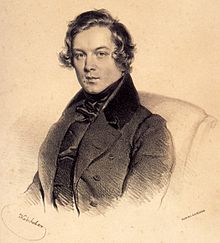 since become known as his Liederjahr, or “Year of Song.” Until that year, Schumann had composed virtually exclusively for the piano. Yet, neither the sudden shift to vocal music, nor the abundance of this creative outpouring, was purely coincidental. It marked the culmination of his courtship of Clara Wieck, and their long-awaited and hard-won marriage.
since become known as his Liederjahr, or “Year of Song.” Until that year, Schumann had composed virtually exclusively for the piano. Yet, neither the sudden shift to vocal music, nor the abundance of this creative outpouring, was purely coincidental. It marked the culmination of his courtship of Clara Wieck, and their long-awaited and hard-won marriage.
Schumann first met Clara in March 1828, when both were invited to a musical evening in the home of Dr. Ernst Carus. Impressed with Clara’s skill at the piano, Schumann soon after began taking piano lessons from Clara’s father, Friedrich, during which time he lived in the Wieck’s household. Schumann and Clara quickly formed a close bond that would eventually blossom into a romantic, though clandestine, relationship. In 1837, on her 18th birthday, Schumann proposed, and Clara accepted. Friedrich, however, who had a rather unfavorable opinion of Schumann, refused to give the composer his permission to marry his daughter. The long courtship and Friedrich’s refusal was a great strain on the relationship. Clara and Schumann exchanged love letters, and were forced to meet in secret. Schumann would even wait for hours in a café just to catch a brief glimpse of Clara as she left one of her concerts. The couple sued Friedrich, and after a lengthy court battle, Clara was finally allowed to marry Schumann without her father’s consent. The wedding took place in 1840.
Frauenliebe und -leben (A Woman’s Love and Life) was one of the song cycles, along with the Liederkreis of Eichendorff and Heine’s Dichterliebe, composed during the intense creative episode surrounding Schumann’s marriage to Clara. The cycle of poems, written by the German poet and botanist Adelbert von Chamisso in 1830, describes events in the life of a woman—from her first meeting with her future husband, to their marriage, the birth of their child, and his seemingly untimely death. Adelbert’s cycle consists of nine poems. However, Schumann set only eight, omitting the poem, Traum der eignen Tage. His setting displays a departure from the Schubertian Lied, with the piano taking on an increasingly independent and important role in portraying the essence and mood of the text. Schumann’s sense of unity is also evident in the reprise of music from the first song as a postlude that concludes the last. While Schumann’s is the best known, two other notable settings of Adelbert’s cycle were composed by Carl Lowe and Franz Paul Lachner. (Continue)Permalink